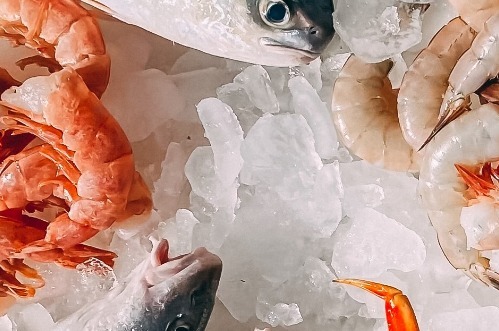W36: Shrimp Update

In W35 in the shrimp landscape, Bangladesh's shrimp production has experienced a significant decline due challenges such as higher production costs, drought, and diseases. In the primary shrimp farming region of Khulna, shrimp exports amounted to 19.9 thousand metric tons (mt) in FY 2022/23. This represents a decline from 24.1 thousand mt from the previous year and a significant drop from 39.7 thousand mt from 2016/17. Several factors have contributed to this decline, including reduced availability of suitable brackish water sources, viral diseases affecting shrimp stocks, resistance among farmers to adopt modern farming practices, and difficulties in sourcing disease-free shrimp fry. Additionally, drought conditions, combined with low rainfall and elevated temperatures, have led to increased shrimp mortality rates across the country's aquaculture farms.
The Global Shrimp Forum predicts a 15% year-over-year (YoY) decrease in Indian shrimp exports for 2023, bringing the total exports to 632.8 thousand tons. Indian shrimp farmers postponed selling their products in Aug-23 because they anticipated higher prices in major markets in upcoming weeks. In 2023, shrimp production in India is expected to decline by at least 15% or more due to hatcheries reducing their imports of disease-free broodstock and operating at less than full capacity. Moreover, feed companies are observing reduced demand for feed in major shrimp farming regions compared to the previous year. On the other hand, India is experiencing rapid growth in the production of black tiger shrimp. In the first half of 2023, India exported 12 thousand tons of black tiger shrimp, marking a significant increase of 137% YoY.
A recent Indonesian government regulation, effective from August 1, is impacting shrimp exporters and processors. Under this regulation, exporters sending cargo worth USD 250 thousand or more must deposit 30% of their earnings for a minimum of three months in a government-controlled bank account. This move aims to maintain financial stability but may hinder exporters' ability to purchase shrimp at higher prices due to lower purchasing power. Compliance offers tax incentives, while non-compliance may result in export permission suspension. There is opposition and lobbying against this rule, primarily from Indonesia's major industries. The government hopes the regulation will align economic development with natural resource exports, particularly in the mining, plantation, forestry, and fishery sectors. However, it could threaten Indonesia's target of USD 7.6 billion in fishery and marine product exports in 2023. Further regulations are expected to provide details on the incentives offered under this regulation.
In the first six months of 2023, the United States (US) witnessed a significant decline in shrimp imports, with a YoY drop of 18%, reaching 361 thousand tons. If this trend continues throughout the second half of 2023, the import volume is projected to reach 690 thousand tons, marking its lowest point since 2017. However, there is optimism among some US importers who anticipate a more favorable trend in the shrimp market for Nov-23 and Dec-23. US retailers are actively engaging in promotional campaigns, particularly for shrimp products packaged in 1.5 to 2 pounds (lbs) sizes, positioning them as the most competitively priced seafood in the market. The profitability of US retailers had declined in the wake of the COVID-19 pandemic, which had previously limited their promotional activities.


